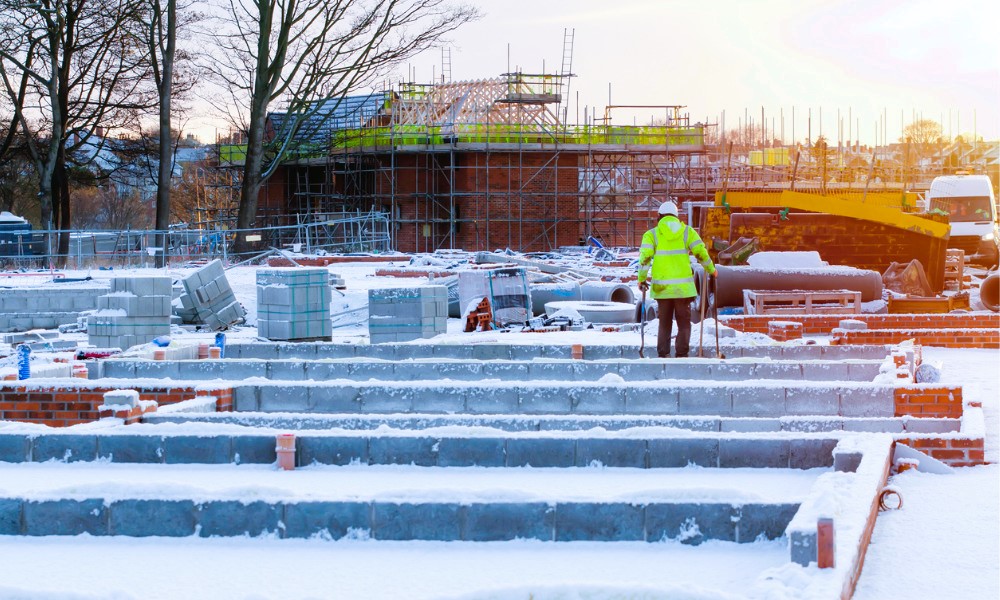Canada’s winters are known for their frigid temperatures, heavy snowfall, and challenging weather conditions. For construction professionals and homeowners alike, the winter season presents unique challenges and considerations. In this article, we will explore the essential steps and strategies for preparing for winter construction in Canada, ensuring that projects can continue safely and efficiently despite the harsh climate.
Understanding the Challenges
Before diving into the preparations, it’s crucial to understand the specific challenges posed by winter construction in Canada:
- Extreme Cold: Sub-zero temperatures can be not only uncomfortable but also potentially dangerous for workers.
- Snow and Ice: Snow accumulation and icy conditions can impede construction progress and create safety hazards.
- Reduced Daylight: Shorter daylight hours during the winter months limit the amount of time available for work.
- Material Challenges: Cold temperatures can affect the properties of construction materials, such as concrete curing and paint drying.
- Safety Concerns: Slippery surfaces and visibility issues increase the risk of accidents.
Essential Preparations

1. Winter-Ready Equipment
Ensuring that construction equipment is winter-ready is paramount. This includes:
- Cold-Weather Fuel: Use winter-grade fuels to prevent freezing and ensure proper equipment function.
- Winter Tires and Chains: Equip vehicles with winter tires and chains to improve traction.
- Engine Block Heaters: Install engine block heaters to facilitate cold starts.
- Heated Cabins: Provide heated cabins for equipment operators to protect them from extreme cold.
2. Proper Clothing and Personal Protection
Workers should be equipped with appropriate winter clothing and personal protection equipment:
- Insulated Clothing: Ensure workers have insulated and waterproof clothing, including gloves, boots, and jackets.
- Safety Gear: Maintain clear visibility by using anti-fog goggles, and ensure workers wear hard hats and high-visibility vests.
- Hand Warmers: Distribute hand warmers to keep workers’ hands warm in extremely cold conditions.
3. Site Preparation
Prepare the construction site to mitigate winter-related challenges:
- Snow Removal: Implement a snow removal plan to keep work areas clear and safe.
- Heated Storage: Set up heated storage areas for materials that are sensitive to cold temperatures.
- Proper Drainage: Ensure proper site drainage to prevent the accumulation of ice.
4. Material Considerations
Select construction materials and methods suitable for cold weather:
- Cold-Weather Concrete: Use additives or heated water to maintain the temperature of the concrete mix during pouring and curing.
- Cold-Weather Adhesives: Choose adhesives and sealants that can withstand cold temperatures without compromising performance.
5. Scheduling and Planning
Modify project schedules to account for reduced daylight hours and potential weather-related delays:
- Early Starts: Start work early in the day to maximize daylight hours.
- Flexible Scheduling: Create a flexible schedule to accommodate weather-related delays and setbacks. Do you like the article? Read our secrets to Energy Efficient Building in Canada’s Cold Climate.
6. Safety Protocols
Emphasize safety protocols for winter construction:
- Training: Ensure all workers are trained in winter-specific safety procedures.
- Emergency Response: Have a comprehensive emergency response plan in place, including first aid stations and communication procedures.
- Monitoring Weather Conditions: Continuously monitor weather conditions and adjust work plans accordingly.
7. Communication

Maintain open and clear communication channels among the project team:
- Daily Updates: Provide daily updates on weather conditions, work progress, and safety reminders.
- Emergency Contacts: Ensure that all team members have access to emergency contact information.
Resources for Winter Construction in Canada
For more detailed information on construction standards and guidelines specific to winter conditions in Canada, you can refer to the Wikipedia offers insights into construction site safety practices, including those applicable to winter construction.
Conclusion
Preparing for winter construction in Canada requires meticulous planning, the right equipment, and a strong commitment to safety. By understanding the unique challenges posed by winter weather and implementing the essential preparations outlined in this article, construction projects can proceed successfully, even in the face of Canada’s harsh winters. Whether you’re a construction professional or a homeowner planning a winter project, prioritizing safety and preparedness is the key to a successful and efficient winter construction season.
